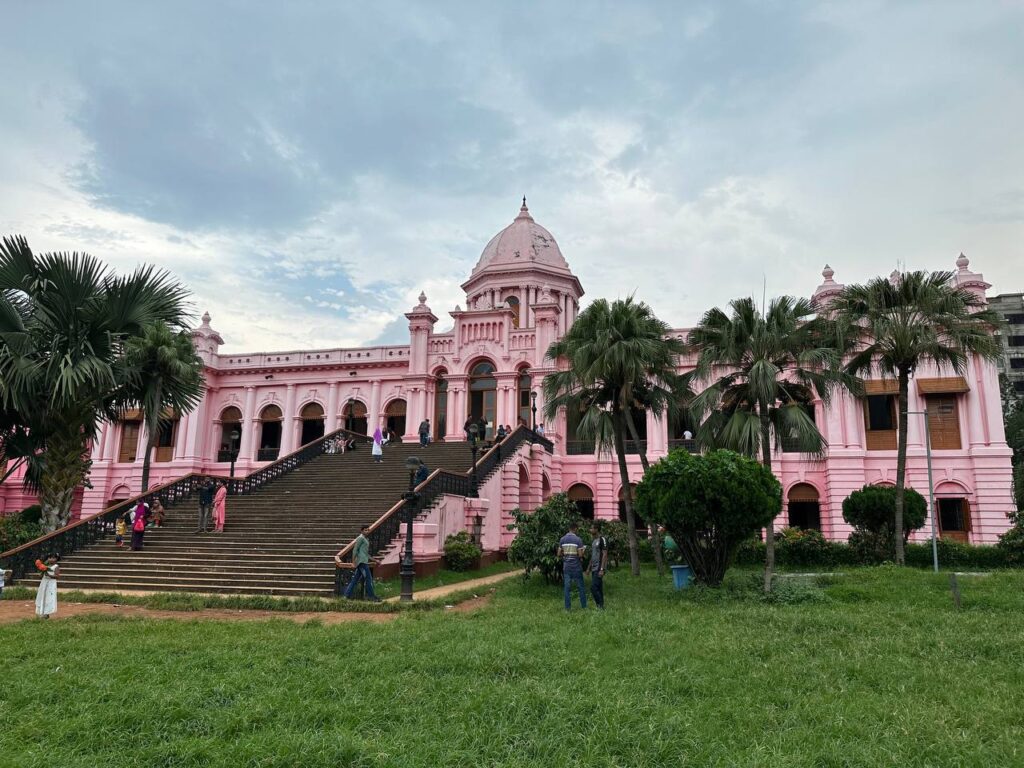
At the heart of Dhaka’s bustling streets, perched on the banks of the Buriganga River, stands a palatial edifice in radiant pink. This is the Ahsan Manzil Museum, an emblem of Bangladesh’s rich heritage and a beacon of its royal history. Let’s embark on a journey through its grand halls, uncovering stories that shaped a nation.
Ahsan Manzil: The Pink Palace
Originally built in 1872 by Nawab Abdul Ghani, the wealthiest landlord of Dhaka, Ahsan Manzil, affectionately known as the “Pink Palace,” was once the official residential palace and seat of the Nawab of Dhaka. Its Neo-Mughal architecture, combined with European elements, symbolizes a unique blend of the East and the West.
Chronicles Etched in Architecture
Every corner of Ahsan Manzil whispers tales of grandeur and decadence. From lavish banquets hosted for British lords to intricate political negotiations that carved the course of history, this palace has been a silent witness to myriad epochal events.
The museum is home to 23 galleries, showcasing an eclectic mix of photographs, paintings, and artifacts. These exhibits not only tell the story of the Nawabs but also paint a vivid picture of Dhaka’s socio-political landscape during the British Raj.
Restoration and Renewal
However, time wasn’t always kind to the Pink Palace. After the demise of the Nawabs, the palace fell into disrepair, with nature and neglect leaving their marks. Thankfully, in the 1980s, efforts were undertaken to restore Ahsan Manzil to its former glory, culminating in its reincarnation as a museum in 1992.
The Legacy Lives On
Today, the Ahsan Manzil Museum stands as a testament to the Nawabs’ opulence and a symbol of Dhaka’s resilient spirit. It reminds visitors of the country’s undying ties to its past while highlighting its progressive trajectory.
A visit to Ahsan Manzil Museum is more than just a historical excursion—it’s an intimate dialogue with Bangladesh’s soul. As you wander its ornate corridors, you’ll be transported to an era where royalty reigned supreme, and where every brick and beam echoes with tales of love, loss, and legacy. If you’re ever in Dhaka, make sure this regal gem is on your must-visit list.
